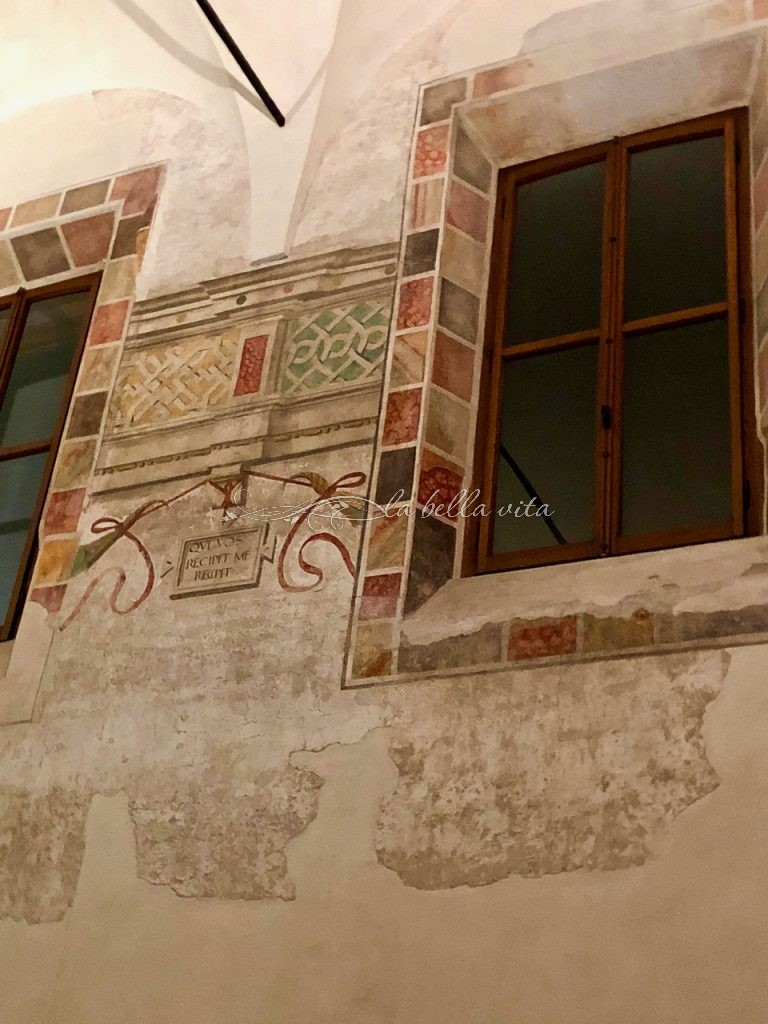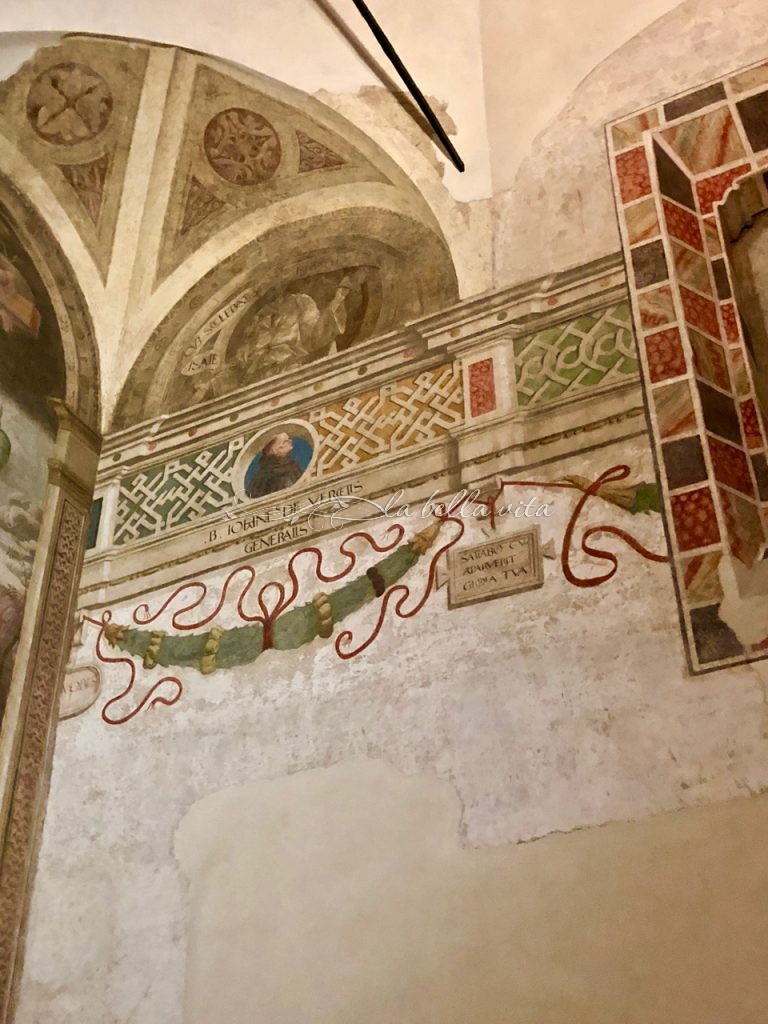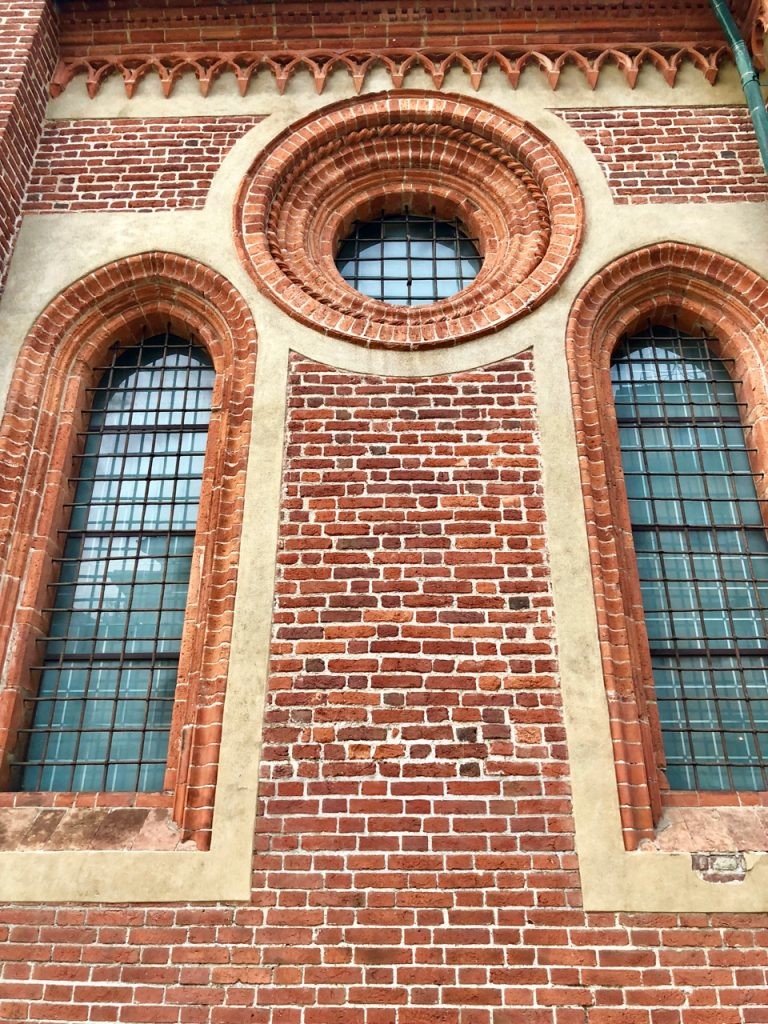Milan, Italy’s Northern Jewel – Leonardo da Vinci’s Last Supper

The Last Supper fresco covers an entire wall inside the church’s old dining hall. The room is dimly-lit to protect the fresco.
Milan was our first stop during our 3-week visit to Italy this year. In just one word, Milan is “WOW!” What a beautiful, clean, old and new city filled with fashionable people!
Of all the cities that we visited in Italy thus far, we have to say that Milan and Modena were the most clean and well-kept cities that we have ever seen in Italy.
Why so many people decide not to visit Milan and just focus on Rome, Florence, and Venice is totally beside us. What a loss for anyone who doesn’t visit Milan, the northern jewel of Italy, in our opinion. Well known as the fashion capital of the world, Milan possesses a charm that, when slowly taken in and savored, can’t help but be greatly appreciated.
The old blends in with the new in this bustling northern Italian city. Ancient cathedrals amaze you in the old city center set amidst sky-scrapers on the industrial and the arts and cultural side of the city. Every single experience in Milan for our 3-day visit was extraordinary.
Our first stop after checking into our hotel — Leonardo da Vinci’s “The Last Supper”
We took an ‘after-hours’ tour of this classic artwork in which we were allowed a full hour of viewing and listening to a mini-lecture on the fresco, Leonardo da Vinci’s style of painting, and the church. Churches in old city-states of Italy, before Italy’s ultimate unification as one nation in the 1800’s, had the Italian tradition of wealthy families building their own churches and places of worship.
Gratitude must be extended to these aristocrats for their financial ability to commission famous artists to paint or sculpt the interiors of churches by artists such as da Vinci and Michaelango.
During normal hours, only 20 minutes is allowed to view Leonardo’s masterpiece with larger crowds. This was a small and very quiet group. A smaller group taken after hours made it very nice to be able to linger and photograph (and video) whatever we wanted as long as we didn’t use a flash on any type of camera.
All photos were taken with my iPhone. My photos are not as clear as when taken by my DSLR camera. But in my attempts to pack lighter and in one overhead travel luggage, I didn’t haul my camera around during this entire trip. My photos are a bit blurrier, but the smartphone camera was more convenient. A small compromise.
Leonardo’s masterpiece was painted on the wall’s of the old dining hall of the church, “Santa Maria della Grazie“. The Church is one of Renaissance art’s most important sites and a shining symbols of the creative human genius that was included on the UNESCO World Heritage List in 1980.
The church was the family worship place for the wealthy Sporza family of Milan who commissioned Leonardo to paint the fresco of the Last Supper. Today, the church is one of the most recognized and appreciated artistic masterpieces of the world, and contains the only Renaissance fresco of its kind that is still visible to this day.

the “cenacolo” (dining hall) of the church is attached on the side of the church as seen in the photo above.”Cena” means “dinner” in Italian.
Photo courtesy of the website for Santa Maria della Grazi

A close up of the famous fresco, you can see much of the fading and damage since the 1400’s when it was painted.
Remember: This is painted on a wall over 600 years ago!

Underneath Jesus, a door was sadly constructed later which was filled in with concrete even later.
Notice the groups of 3 apostles, four times. This was Leonardo’s way of portraying the Trinity. Also notice the movement and emotions expressed on each of the apostles. This was Leonardo’s introduction to painting during the Renaissance . . . prior to which artists never painted any emotional expression of the subjects in art. The apostles’ emotions are those expressing shock to wonder “who would betray Jesus?”. Clearly they are very upset about what Jesus stated (below). Judas is the third person on the left side of Jesus (looking at the fresco). He has a dark brown skin-tone, wearing a blue and green robe and holding a small brown bag.
The painting’s theme is that from the Gospel of John, in which Jesus states that one of his apostles will betray him.


The Crucifixion at the opposite end of the old dining hall. Painted by Giovanni Donato daMantorfano in 1495.
This extraordinary fresco of the crucifixion at the opposite side of the dining hall was simply breathtaking!

Photo of the remains of the destroyed church after the British bombed Milan during WWII
The Church and Convent were bombed during WWII in 1943. Only a few of the structure’s walls survived, including that of the Refectory (dining hall), as the Milanese people reinforced it prior with sandbags. It is miraculous that the fresco work in the dining hall were not destroyed!
Milan was bombed first in the war because Mussolini started the fascist movement in Milan.

Remains of the original artwork on one wall left after WWII bombing.


Beautiful brick exterior of the Church of Santa Maria . . . home of “The Last Supper”


Below is a brief video of the dining hall on all four sides for you to experience a little bit. ENJOY!
The last wall shown in the video is completely white, thus it was built after the structure was bombed in WWII.
Miraculously the two frescoes were not destroyed.
For more information about Leonardo da Vinci, please click on this link: Leonardo da Vinci

photo: Wikipedia Public Domain



Thank you so much for sharing your experiences and pictures too, very informative indeed!
My pleasure Janet. Thanks for stopping by!
It’s amazing to look at that painting and think about it having been painted 600 years ago! It’s in remarkable condition. Good call on taking the after hours tour. Thanks for sharing your experience and these lovely pictures!
I’m glad that you enjoyed my little ‘tour’. Like you said, it’s amazing to realize how ancient this classic fresco is!
Ciao,
Roz